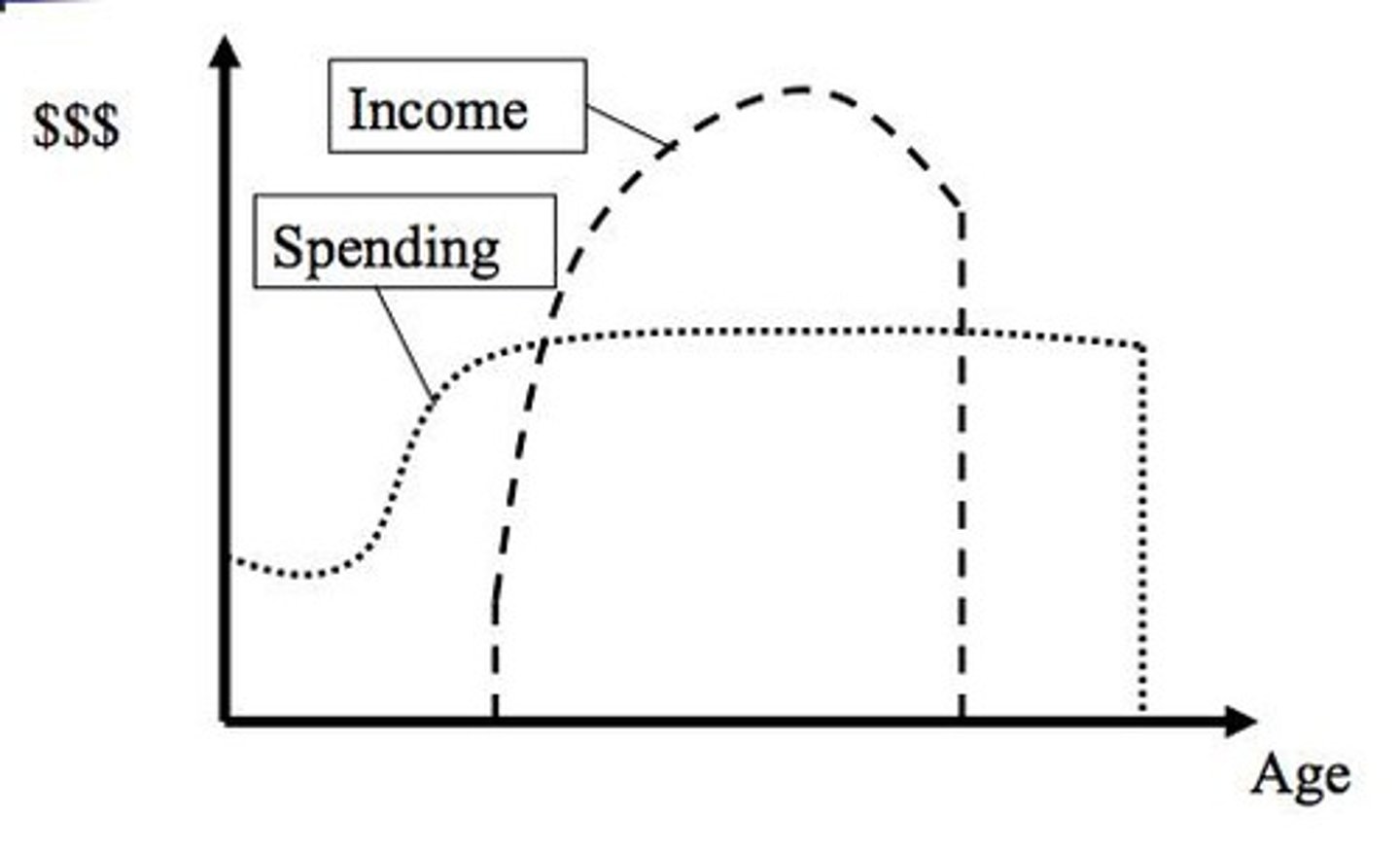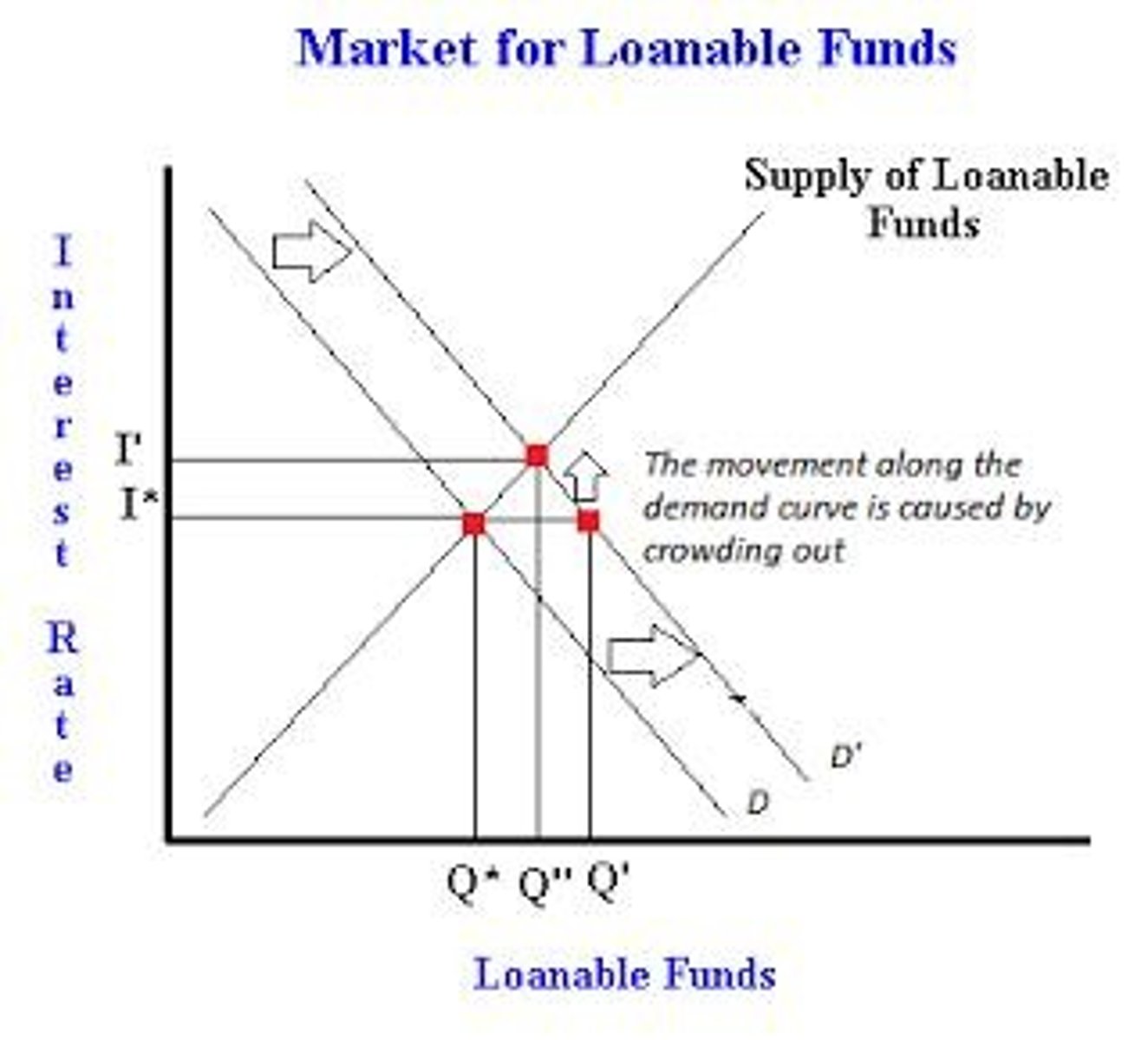Week 9(Aggregate Demand and Purchasing Power Parity)
1/38
There's no tags or description
Looks like no tags are added yet.
Name | Mastery | Learn | Test | Matching | Spaced |
|---|
No study sessions yet.
39 Terms
Aggregate disposable income
GDP - Taxes + Transfers
Lifetime income hypothesis
consumption is determined by the whole lifetime income rather than the level of income at a certain point of time.

Government policy
can affect spending behavior and shift the AD curve through changes in tax policy, transfers, or government spending.
Interest rates
The cost of borrowing money, which can be influenced by the price level.
Consumption behavior
Influenced by current income, wealth, and government policies.
Temporary income change
Does not significantly affect spending behavior.
Permanent income change
Can significantly affect consumption and AD.
Real wealth
The value of assets adjusted for inflation.
Capital goods
Goods used to produce other goods and services.
Depreciation
Capital that gets 'used up'
After-tax profits
Profits - Taxes + Transfers
Retained profits
Profits that are saved and reinvested
Loanable Funds Market
Market where funds are borrowed and lent
Sources of Loanable Funds
Private savings, government budget surplus, borrowing from the rest of the world
Aggregate income (Y)
Sum of spending on consumption goods and services (C), private saving (S), and taxes (T)
Aggregate expenditure
Sum of consumption plus government spending plus investment plus exports minus imports
Investment financing equation
I = S + (T - G) + (M - X)
Supply of loanable funds
Relationship between the quantity of loanable funds supplied and the real interest rate
Factors shifting loanable funds supply curve
Disposable income, expected future income, wealth, default risk
Real interest rate (r)
Nominal interest (i) rate adjusted to remove the effects of inflation (π)
Nominal interest rate (i)
The stated interest rate before adjusting for inflation
Demand for loanable funds
Total quantity of funds demanded to finance investment, government budget deficit, and international investment
Equilibrium real interest rate
Where supply intersects demand for loanable funds
Government spending (G)
A component of the government budget, which includes G, Transfers, Taxes, and Savings
Government Savings
Calculated as T (taxes) - G - Transfers.
Budget deficit
Occurs when government savings are negative, leading to borrowing.
Fiscal policy
Tools exercised by the government to influence GDP through G, T, or transfers.
Crowding out effect
when G, T or transfers change because government savings would change as a result

Ricardian Equivalence
The concept that economic agents perceive an increase in G as a future decrease in G or an increase in T as a future decrease in T, leading them to consume less and save more.
Price level increase effect on exports
Makes domestic goods more expensive abroad, leading to a decrease in exports (X drops).
Price level increase effect on imports
Makes foreign goods relatively cheaper, leading to an increase in imports (M increases).
Exchange rate appreciation
When US dollars gain value against Japanese Yen, making US goods more expensive and Japanese goods cheaper, leading to decreased US exports and increased US imports.
Purchasing Power Parity (PPP)
A theory used to determine the relative value of different currencies, where a change in price level leads to a change in exchange rate that offsets it.
Law of one price
States that if an item is traded in more than one place, the price will be the same in all locations.
Arbitrage activities
Cause changes in supply and demand for currency when the law of one price is violated.
Equal value of money
The situation when two quantities of money can buy the same quantity of goods and services, known as purchasing power parity.
Price equation in Japan
Price (in Japan) = E (Exchange rate, Yen/$) * Price (in USA).
Average price levels
Considered when determining exchange rates based on relative prices of economies.
Relative prices effect on exchange rate
If PPP holds, the exchange rate should follow changes in relative prices.